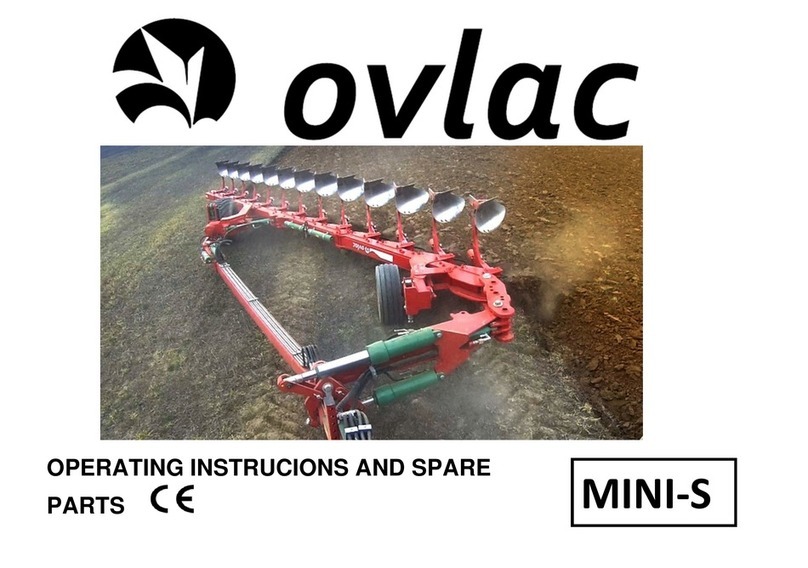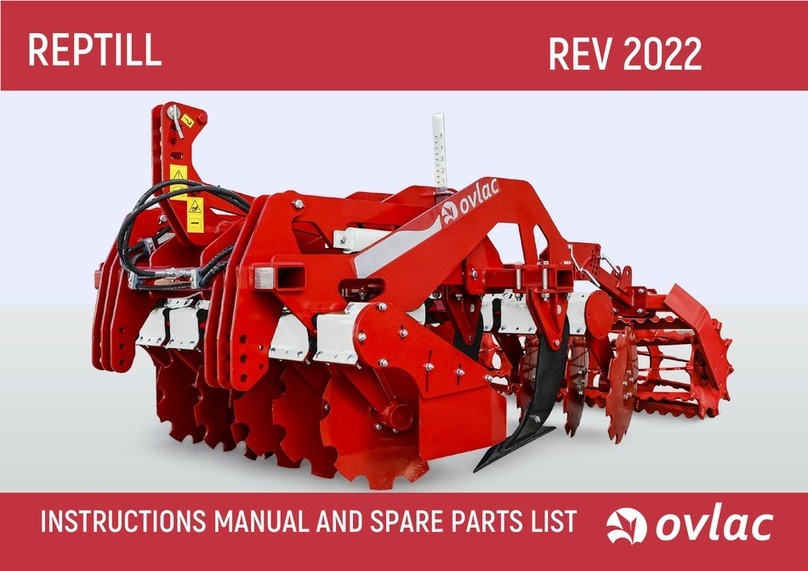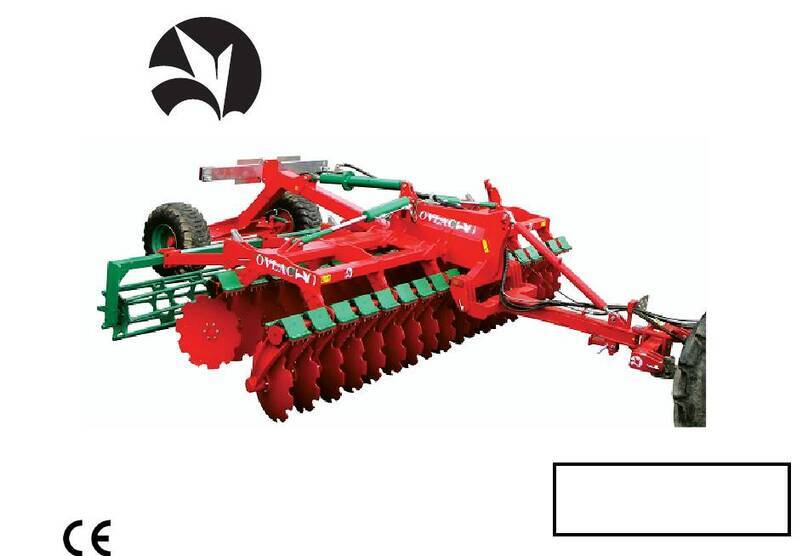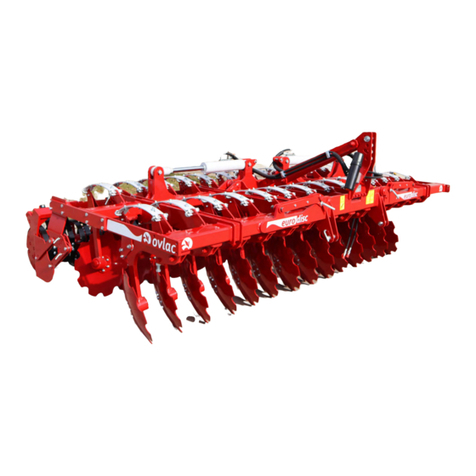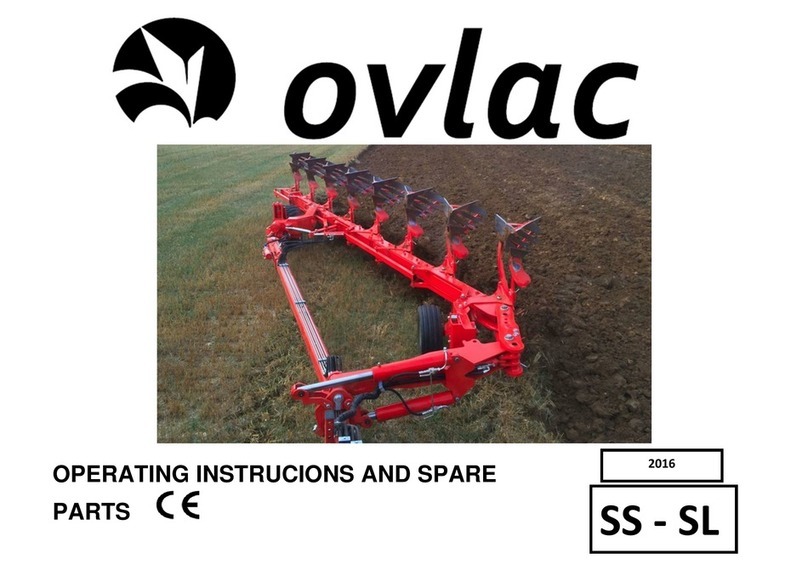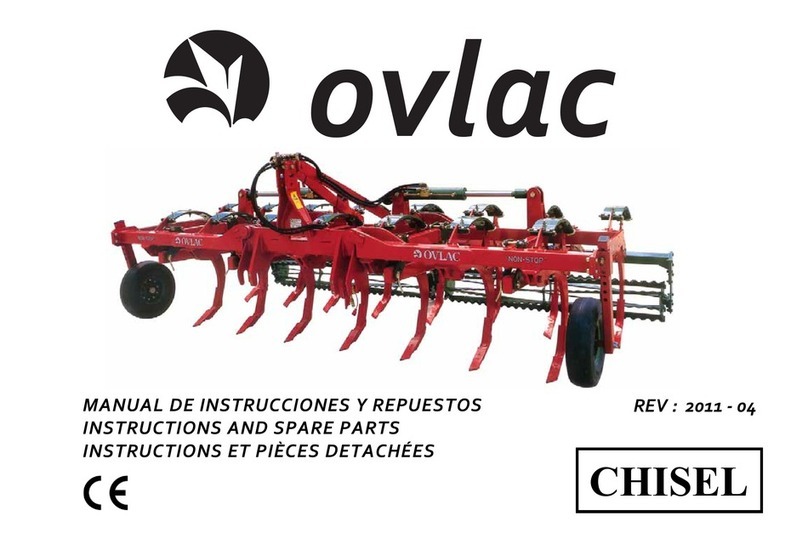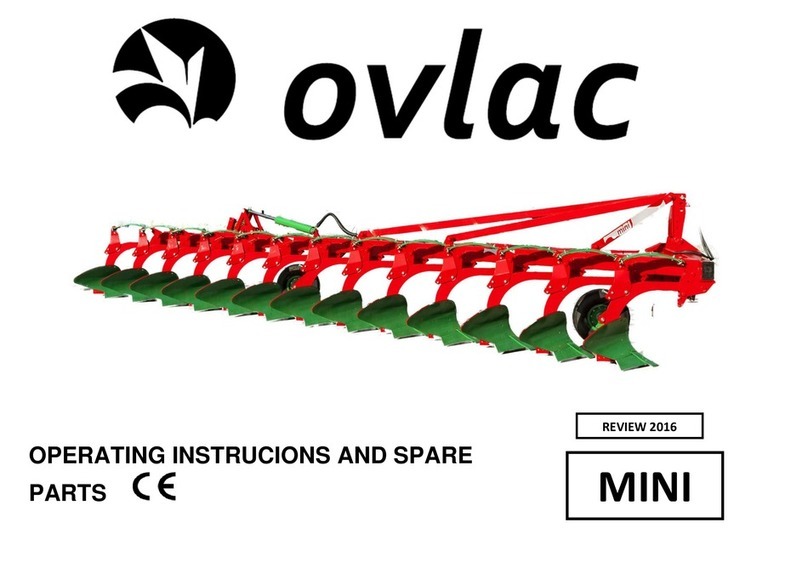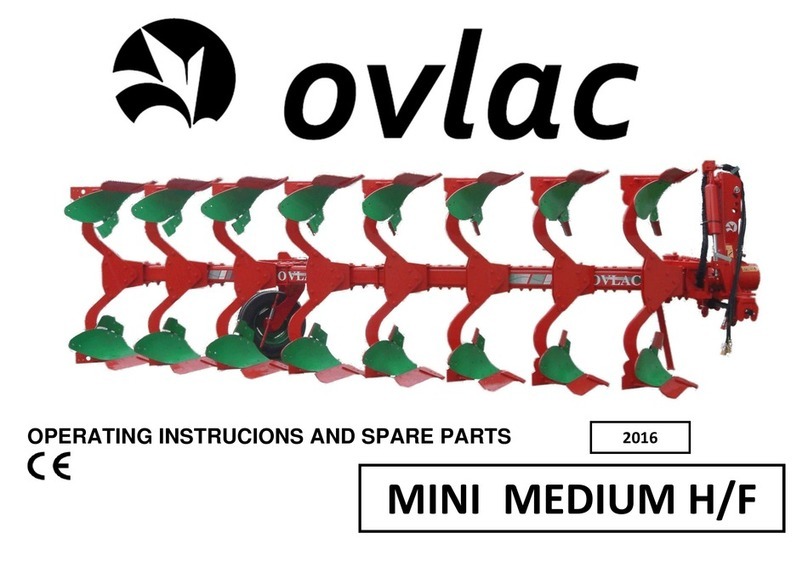
1.- Security Rules
Read carefully all the instructions for use of the cultivator.
The manufacturer declines all responsibility for any inconvenience caused by NOT observing
the Safety and Accident Prevention Regulations described below.
1.- Pay attention to the danger and warning symbols shown in this manual and indicated on the
equipment.
2.- Repairs and adjustments to the equipment must always be carried out with the engine
stopped and the tractor locked.
3.- It is strictly forbidden to transport people or animals on the equipment.
4.- It is strictly forbidden to entrust the driving of the tractor, with the equipment hooked up, to
people without a driving license, inexperienced, or who are not in good condition.
5.- Scrupulously observe all the accident prevention measures recommended and described in
this manual.
6.- LThe application of additional equipment to the tractor implies a different weight distribution
on the tractor axles.
7.- Before putting the tractor and the equipment into operation, check that all the safety
elements for transport and use are in perfect condition.
8.- The symbols with warnings displayed on the equipment give the appropriate suggestions for
the use of the same.
9.- To circulate on the road, it is necessary to observe the rules of circulation according to the
country where it’s operated.
10.- Respect the maximum weight foreseen on the tractor, the total mobile weight, the transport
regulations and the road code.
11.- Before starting to work, familiarise yourself with the control devices.
12.- Pay the utmost attention to hitching and unhitching the equipment.
13.- Never leave the driving position when the tractor is in motion.
14.- Remember that road adherence, steering and braking capacity may vary significantly due to
the presence of suspended equipment.
15.- It is strictly forbidden to remain in the area of action of the equipment.
16.- Before leaving the tractor, lower the suspended equipment, stop the engine, apply the
parking brake, and remove the ignition key from the dashboard.
17.- The category of the hitch pins of the equipment must correspond to that of the linkage of
the lift.
18.- Pay maximum attention when working in the area of the arms of the tractor, it is a very
dangerous area.
19.- It is strictly forbidden to stand between the tractor and the equipment to manoeuvre the
external lifting control.
20.- During road transport with the equipment suspended, put the control lever of the hydraulic
lift in the locking position.
21.- The spare parts must correspond to the requirements defined by the Manufacturer. Always
use original spare parts.
22.- The safety instruction decals must always be clearly visible. Clean and replace them if they
are not legible (You can ask your dealer for them).
23.- The instruction manual must be kept for the whole life of the equipment.
3







